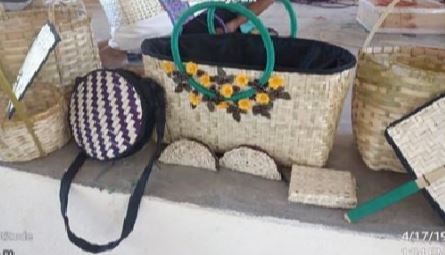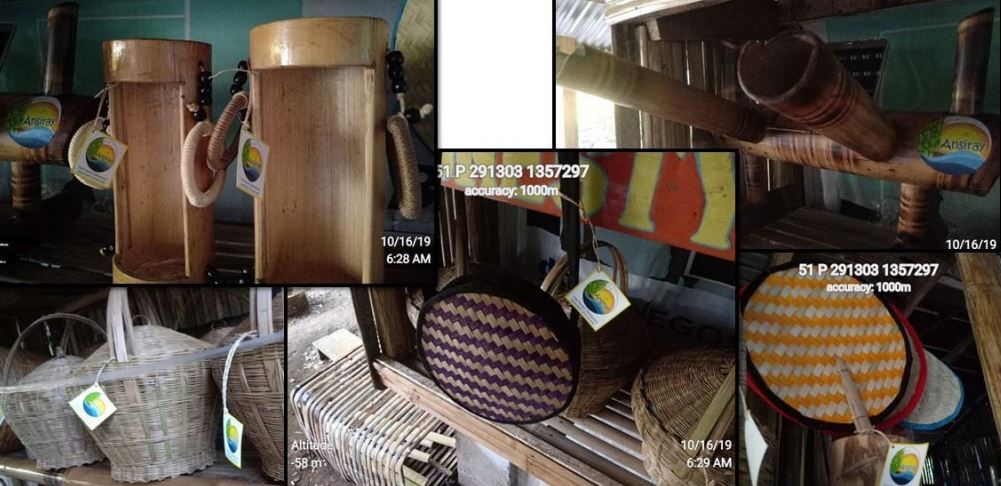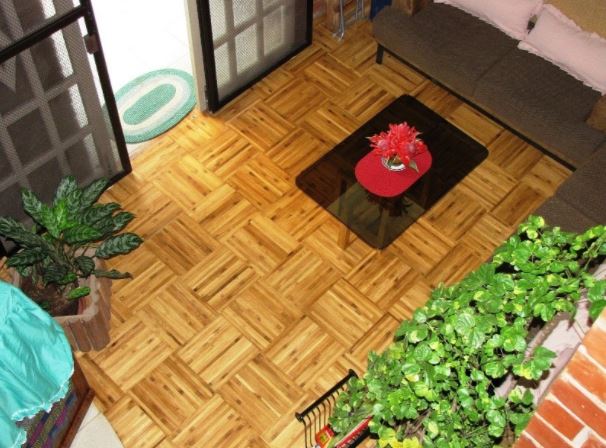Text by Henrylito D. Tacio
Photos courtesy of DOST
Intellectual Property Rights (IPR) are the rights acquired by an owner of intellectual property. Intellectual property is a category of property that includes intangible creations of the human intellect.
In Occidental Mindoro, a bamboo community has filed with the Department of Trade and Industry (DTI) for IPR over their distinct bamboo crafts that have raised their income opportunities, according to information released by the Department of Environment and Natural Resources (DENR).
The Ansiray Tree Planters Development Association, Inc. (ATPDAI) did so to protect their business interest as they were the ones who developed their own products and designs. It has produced 31 types of bamboo products.
Occidental Mindoro had 326,000 hectares of natural forests, extending over 57% of its land area of 5,865.71 square kilometers. That was in 2010. In 2020, the province lost 1.19 thousand of natural forests.
The environment department is promoting a sustainable kind of forest management in the province as the forests are heavily threatened with illegal human activities such as charcoal making and kaingin. These result in the degradation of soil and forest destruction.
One of the programs the DENR implements is the “Handicraft Industry for Sustainable Community Development and Environmental Protection” in San Jose, the province’s largest municipality.
Through this project, DENR has helped maximize bamboo production for ATPDAI. Among the bamboo products, the association has developed include four types of lampshades, two types of wine holders, two types of centerpiece table, placemats, hamper, mobile speaker, tower racks, curtains, pitcher, cup, necklace, earrings, bracelet, key chains, ballpen holder, and tray.
There are also two types of baskets, accessory organizer, Chinese design bamboo sala set, bilao, television rack, modern crib, modern style sala set, and mugs and pitcher.
Bamboo was known before as the “poor man’s timber.” These days, bamboo has graced many high-end homes, hotels, and offices around the world. This is the reason why the government is promoting the use of bamboo as a substitute for wood, as it is as durable as any wood. Promoting bamboo may also reduce deforestation.
In San Jose, Occidental Mindoro, the 47-square kilometer Ilin island, has abundant natural stands of bamboo. Ansiray, one of the island’s barangays, has been known for its bamboo furniture-making community.
According to the press release, more than 30 households have furniture-making skills. Eighteen households are engaged in bamboo tree production.
The DENR’s project, costing P868,000, included capacity building, enterprise development and marketing, operations management, and project management.
The project generated a product trademark and label that qualify for IPR and a business plan for the bamboo enterprise operations.

Designed by Ansiray association (DOST) 
Ansiray bamboo products (DOST)
The ATPDAI has gained support from the local government and other organizations. The San Jose local government unit (LGU) provided an area in the town’s población, which is used as a display area to showcase their bamboo products.
The local government, which has committed itself to engage in a project on diversification of the use of bamboo, is also planning to establish a bamboo eco-park in Ilin island.
The Divine Word College of San Jose-Occidental Mindoro, another collaborator, is extending training for the community’s financial and technical literacy.
The Ecosystems Research and Development Bureau (ERDB), an attached agency of DENR, is training the people of Ilin Island on bamboo propagation and best practices in bamboo farming.
Barangay Ansiray – with 60-70% of its agricultural area planted with bamboo – has a total of 224 households with an average of 8 members per household with a usual monthly income per capita of P 3,000. With the DENR project, the households have been observed to have raised their income.
Under the DENR’s Community-Based Forest Management (CBFM) agreement, ATPDAI has a tenure of over 382.15 hectares of forestland. They have 152 hectares of the bamboo plantation that are now under the management of the National Greening Program.
CBFM is a government program to encourage reforestation and the sustainable management of forests. Under a CBFM agreement, a community is entitled to develop and use a forest area and its resources for 25 years.
The DENR’s city environment and natural resources office (CENRO) in San Jose has conceived the bamboo project as the community’s income from beds and sala set, their traditional products, is not enough to sustain their livelihood.
DENR is asking for assistance from other government agencies in maximizing the business opportunities of ATPDAI. The Department of Science and Technology (DOST), for instance, can lend assistance in machineries and product design.
Infrastructure should also be improved in barangay Ansiray as their production area is on an island. As such, they need a boat for the efficient transportation of their products.
The press release said that lack of investment, weak institutional framework and limited skilled people in the bamboo craft are among the reasons blamed for the slow growth of the bamboo industry in the country. The absence of reliable raw material sources also discourages investments in bamboo processing.
Bamboos, along with rattan, provide several environmental, economic, and social benefits to society. “Bamboo is a sustainable resource that can grow under a range of climatic conditions, but preferably a tropical climate,” said the website grandviewresearch.com. “It provides approximately 35% more oxygen and absorbs 40% more carbon dioxide as compared to trees, which results in a substantial improvement in the air quality. Further, cultivation of bamboo offers carbon fixation, controls soil erosion, and purifies the environment.”
In the world market, bamboo is more preferred over timber as the former is easier to harvest, transport and is relatively affordable.
“(Bamboos) are water-resistant by nature and offer high durability,” the website said. “These benefits result in the sustainable use of bamboo in applications such as furniture, shelter, and handicraft products. They are also used to produce flooring, charcoal, mats/screens, and woven products.”
In the Philippines, the Forest Products Research and Development Institute (FPRDI), a line agency of the Department of Science and Technology (DOST), is promoting the use of engineered bamboo.
Engineered bamboo, designed to be a replacement for wood, is a low-cost product manufactured from bamboo. It has been used for paneling, vehicle beds, concrete formworks, lightweight building construction. It is even used for shelters after the 2004 tsunami.
In comparison to the woods that have been traditionally used, a number of benefits and drawbacks have been identified with engineered bamboo. Lower cost, especially when replacing wood that would otherwise have been imported, is a key advantage. Further benefits include greater hardness and shape retention, especially in high temperatures.
“We are happy to say that the Philippines now has its own engineered bamboo industry,” says Dr. Romulo T. Aggangan, FPRDI director. “Although still immature and bugged by various problems, it is also blessed with a lot of strengths, and given enough support from concerned groups, can be expected to grow strong, and in time be able to meet the needs of local clients or even capture a slice of the global market.”
Although often listed as a “minor” forest product, bamboo is fast regaining its rightful place these days. According to an article, which appeared in Reader’s Digest, bamboo “is delicate enough to be used in phonograph needles, yet strong enough to be used in bridge construction.” As such, bamboo can replace or indirectly decrease the consumption of three critically scarce resources: wood, metal, and oil.
Bamboo is also indispensable in the fishing and banana industry. In Lake Sebu, South Cotabato, people use bamboo as a material for making rafts, fishing rods, outriggers for bancas, and for fish pens. In salt-water areas, bamboo is used as stakes in the culture of mussels and oysters.

